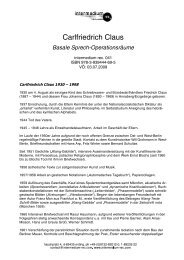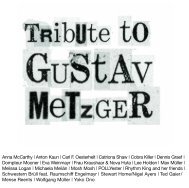Booklet - Strunz! Enterprises
Booklet - Strunz! Enterprises
Booklet - Strunz! Enterprises
Sie wollen auch ein ePaper? Erhöhen Sie die Reichweite Ihrer Titel.
YUMPU macht aus Druck-PDFs automatisch weboptimierte ePaper, die Google liebt.
When you hear the 1966 concert today – how do you respond to it?Every work of art is by its very nature linked to the time in which it is producedand its significance changes with the shifting angle of perception in later periods.To the extent that it loses its time-related (explosive) force, it increases its valueas a medium which opens up historical insights for us. Nowadays a public pianodestruction would seem to me to be a kind of abreaction folklore. The decision tointroduce destruction as a medium in art therefore only had such a radical bitebecause it was the logical step in the modernity unfolding at precisely that time.On the one hand, one was looking for adequate artistic forms of expressionwhich did justice to the apocalyptic disasters of the first half of the century, andon the other one was standing at the threshold of a liberation mania on all levels.The new anti-authoritarian man, the horizon of a society free of all kinds of constraints,seemed within reach and these hallucinations released formidable energies.Any and every structure was felt to be authoritarian and its destructionseemed to trigger a lust which we can hardly begin to imagine today. I amreminded of the Nietzschean grand gesture, the pathos of Zarathustra’s cry:“Break, you discerning ones, the old tablets!” In contrast, for those of us whobelong to a time when only a few buffoons or nostalgics are blowing the horn ofutopia, the certainty has prevailed that every liberation movement is simultaneouslya step forward and the prelude to a downfall. We therefore seem to havebeen radically cured of such euphoria.The Piano Destruction Concert would belong in a cabinet of musical curiosities ifit merely exhausted its potential in this context. For me, however, this art workcontains motifs which extend beyond the artistic debate of the 1960s. The confrontationwith the human potential for violence which Ortiz performs and intendsis a timeless constant. The brute intensity of the notes which Ortiz applies to thepiano as he violates it can hardly be eluded – they continue to induce even in amodern listener a state of spellbound horror and have lost nothing of their power.I see in destruction art the dilemma of wanting to give a preventive commentary





